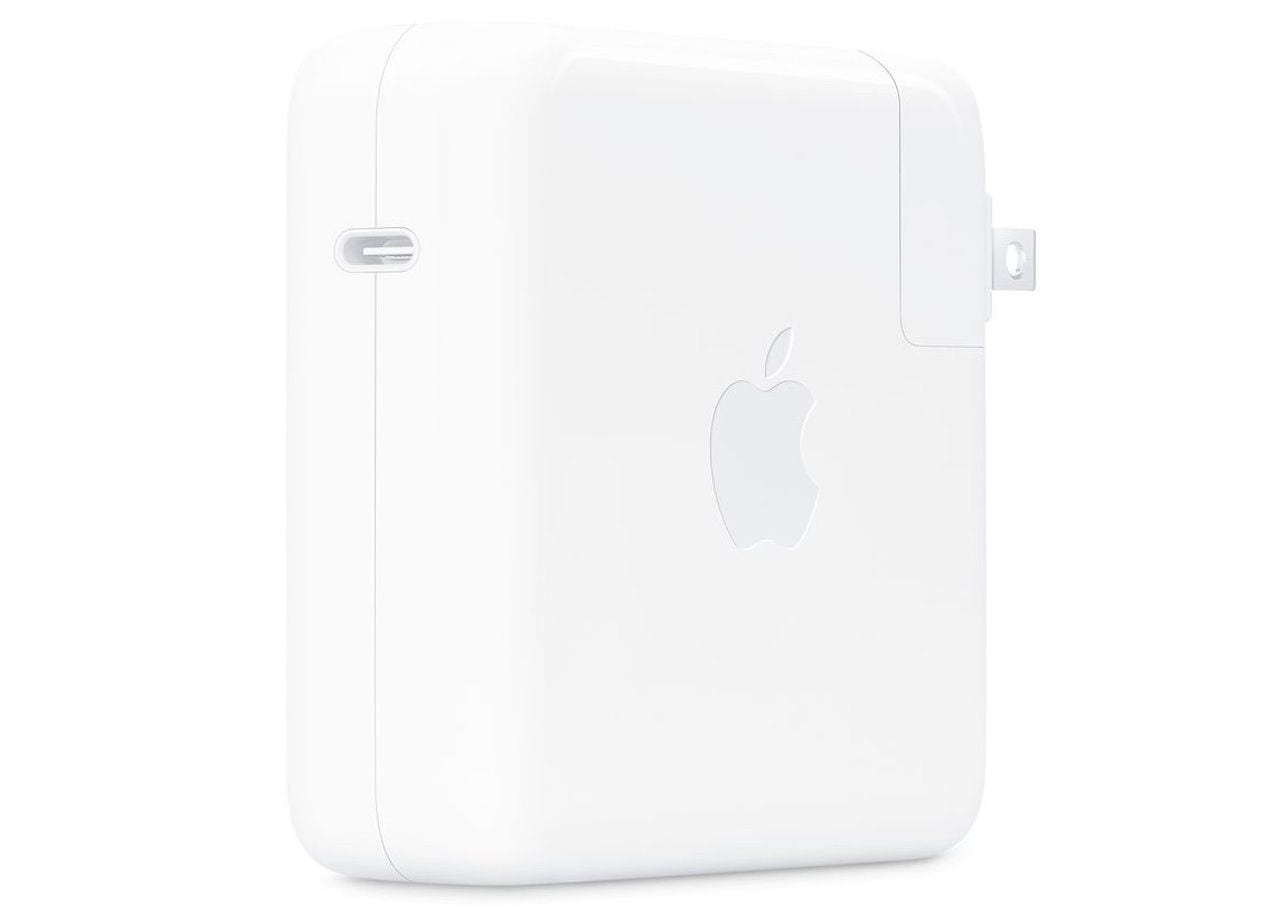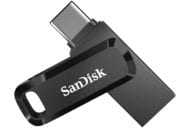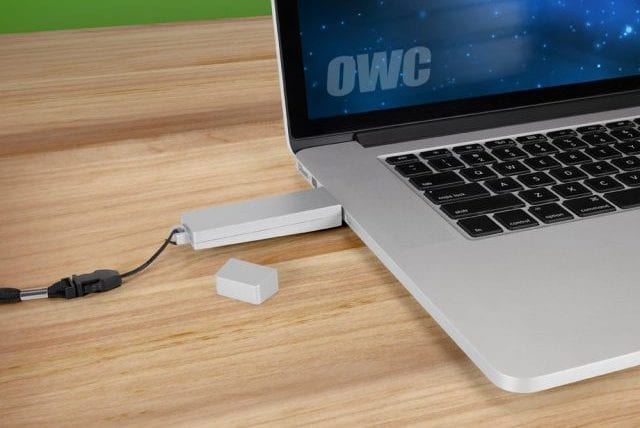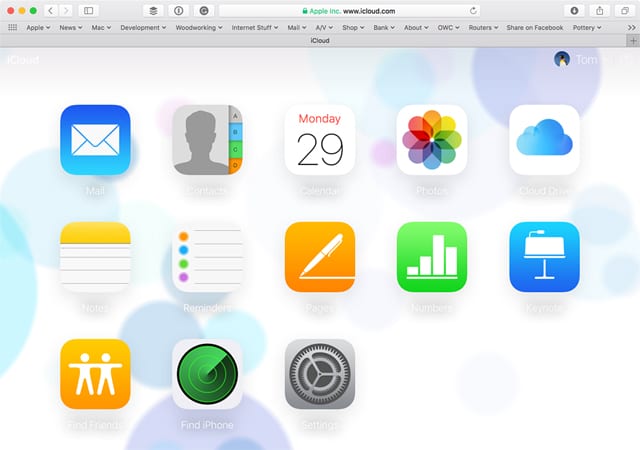
Whether your Mac has just been unboxed or you’ve had it for years, there are some accessories that every Mac owner should consider indispensable. Today we’ll take a look at a dozen of these accessories and how they can assist you in your daily work.
1 – Backup Drive
Next month is Backup Month, so you’ll be hearing a lot from us about the necessity of backing up your Mac. A backup drive should not be an optional accessory — every Mac user should consider backups to be essential.
You won’t need to spend a lot of money to get an external drive for backups. I suggest always getting a USB 3.1 or Thunderbolt drive, as the extra speed helps both in making and restoring your backups. That being said, the OWC Mercury Elite Pro mini is a favorite of many Mac users. It is bus-powered, so it doesn’t need an external power adapter, it’s compatible with Thunderbolt 3, and a 4TB drive is only $199.99.
Just plug in an external drive, and Time Machine will ask if you want to use it for backups. Say yes, and you’re on your way to having a constant backup of your Mac.
2 – HDMI Adapter
Particularly for those who have MacBooks, an HDMI adapter is an extremely useful accessory. Most high-definition TVs and many monitors use HDMI for input, and classrooms and meeting rooms have projectors that also use the standard for video connectivity. Many times when I’ve been on vacation, I’ve connected my MacBook to the TV in my hotel room or cruise ship stateroom to view my photos on the big screen.
For recent MacBooks with USB-C ports, the Tripp Lite USB-C to HDMI adapter ($57.99) is very useful and allows the MacBook to be charged while in use. Be sure to have an HDMI cable like the NewerTech 3-foot HDMI cable ($4.99) on hand as well to bridge the gap between the adapter and the monitor or projector.
3 – Uninterruptible Power Supply (UPS)
One reason that I’ve decided to commit to using a laptop Mac from now on is that the battery inside it can keep my Mac working even when the power is out. If you don’t use a laptop and prefer the desktop machines like the iMac or iMac Pro, Mac Pro, or Mac mini, it’s a great idea to use an uninterruptible power supply (AKA UPS). They usually help condition the power going to your desktop Mac, have a built-in sealed lead-acid battery to help keep the Mac going for a while after power shuts down, and have multiple AC outlets.
A UPS can be a lifesaver in storm situations, giving your Mac just enough power to ensure that all of your work-in-progress can be saved and apps shut down properly. One popular brand that’s available at many office supply stores is APC, which also provides a useful online tool for sizing the battery in the UPS.
In some cases, it’s possible to connect a UPS to your Mac with a USB cable in order to have the Mac automatically shut down during an outage. All of the controls for most uninterruptible power supplies are built into macOS and can be found under System Preferences > Energy Saver when the UPS is connected.
4 – A Second Display
One thing I personally find very useful — especially with a MacBook Pro — is an external monitor. Having a second screen is somewhat addicting. I use one external screen for all of the constantly updating apps, such as Mail, while my built-in MacBook display is used for the work I’m focused on.
Pricing on external monitors is quite reasonable. Some low-cost 4K monitors from manufacturers you’ve probably never heard of can be had for as little as $200, while a top-of-the-line 27-inch LG 4K IPS LED Monitor using USB-C runs about $650. The pricing varies based on color accuracy, contrast, and other factors, so it’s useful to actually see what a monitor looks like before you buy one.

If money is no object and you want what’s considered to be the best Mac monitor, look no further than the Apple Pro Display XDR (see image above). Get one with the Nano-texture glass, and the Pro stand for only $6,998!
5 – An SD Card Reader
Do you do any photography or video work? SD and micro-SD cards are common in digital cameras, camcorders, action cameras, and drones, and rather than carry a variety of cables to connect your cameras to your Mac. It’s a lot easier just to remove the SD or micro-SD card and use an SD card reader to move the media to the Mac.
The newer iMacs, iMac Pros, and older MacBooks all have built-in SDXC card readers, which makes life quite simple — you just plug the card into the existing reader. For other Macs, a USB-A or USB-C card reader can be plugged in to read the cards. USB-C Macs can use the IOGEAR 12-in-1 Pocket Card Reader/Writer ($19.95), and older USB-A-based Macs work well with the $7.99 Sabrent 2-Slot Card Reader.
6 – USB Hub
By this point, you’re probably thinking that you’re going to have a pile of little adapters and cables, but fortunately, there’s one accessory that can replace a lot of individual items — a USB hub.

For example, instead of carrying around an HDMI adapter, USB-C to USB-A adapter, and SD/micro-SD card reader, I use one hub to perform all of the functions. That hub is the OWC USB-C Travel Dock (as low as $32.99, see image above), which is USB-C / Thunderbolt 3 compatible and features two USB-A ports, a USB-C passthrough for charging, an HDMI 2.0 port supporting up to 4K resolution, and an SD reader. Most micro-SD cards come with an SD to micro-SD adapter, making it simple to read the little cards as well.
7 – Carrying case, shell or sleeve
The next item on the list is somewhat MacBook-centric, but I think it’s important for any laptop — a case, shell, or sleeve. Sure, you can just pop your MacBook into a backpack or other bag, and you will be prepared for most circumstances. One of my favorite accessories that protects the aluminum body of the MacBook is a translucent plastic hard shell. These are really inexpensive; I bought one for my 16-inch MacBook Pro that came with a keyboard cover as well, and it cost me just $17.
At a price like that for a quality MacBook Pro shell, I can easily replace it if it gets scratched or discolored. I can’t replace the exterior of my MacBook Pro inexpensively.
Sleeves and cases are also great for MacBook protection, and they’re cheap insurance from a drop or bump. You can find sleeves and cases from a variety of manufacturers from less than $10 to as much as $265 right here at OWC.
8 – 1080p or 4K Webcam
All of Apple’s “all-in-one” computers (MacBooks, iMacs, and iMac Pros) come with a FaceTime camera built-in, perfect for making FaceTime or Skype calls. If you’re considering making professional-looking YouTube videos or just want something with a better resolution than what’s available in the Mac, consider an external webcam. Should you have a Mac Pro or Mac mini, you’ll also need a separate webcam just to make those FaceTime and Skype calls.
I was faced with this when I bought my 16-inch MacBook Pro, which comes with a rather low-quality 720p (1280 x 720 pixel) resolution camera. Since I do recording for some classes, I wanted a better camera capable of doing 1080p HD (1920 x 1080) or 4K UHD (3840 x 2160) resolution.
HD webcams are available from a variety of manufacturers at prices as low as $30, while 4K UHD webcams with High Dynamic Range and stereo microphones run as much as $200. There’s even one model — the Logitech 4K Pro Magnetic Webcam — designed exclusively to work with the $5,000 – $6,000 Apple Pro Display XDR. If you can afford the Pro Display, you can certainly afford to spend another $200 for a webcam that magnetically mounts on the display.
9 – A Second Power Adapter
Those of us who use a MacBook Pro (or any MacBook, for that matter) as a primary computer often find a second power adapter to be a really good investment.
Particularly if you do a lot of traveling, it’s useful to have one adapter in your computer’s favorite travel bag and another at your desk. That way, you don’t run into that sinking feeling when you’re unpacking your MacBook Pro in Buenos Aires, Argentina, and suddenly realize that the power adapter is at home!

I’m a bit picky about the power adapters for Apple’s laptop, so I only buy them from Apple. There have been a number of documented cases of MacBooks being damaged by inexpensive third-party adapters available from online sources. Apple’s 96W USB-C Power Adapter (see image above) for the newest MacBook Pro costs $79, so it’s not exactly cheap. However, it’s the fastest possible charger for the 16-inch.
10 – External Microphone
Earlier I mentioned getting an external webcam for top-quality Mac video conferencing and recording. Likewise, if you do any podcasting or need to record high-quality audio on a Mac, you probably want to look at getting an external microphone.
Mac mics are actually pretty good, and they continue to improve with time. However, they’re made for one specific purpose — capturing audio from the person behind the keyboard. Recording a meeting or a podcast with more than one participant is better done with an omnidirectional mic than the built-in Mac mic. Even better? Having a microphone for each participant feeding into a mixer that then feeds the combined audio into the Mac.
For truly professional sound, OWC sells microphones from well-known audio manufacturers like Blue Microphones and Marshall. Whether you’re recording music vocals, podcasts, or voiceovers for a video, a pop filter gets rid of those “plosives” that can ruin a recording.
11 – An iPhone or iPad
Here’s a Mac accessory you may already own, and it can be much more useful than you probably imagine.
I use my iPhone as my only scanner now. Remember the good old days when you bought an all-in-one printer with a big scanner plopped on the top of it that you barely used? Now you can get low-cost inkjet and laser printers for less than $100 without the scanner or “faxing capability”, and simply use the camera on an iPhone or iPad as your scanner. My favorite app for this? Scanbot, although there are many similar apps. You can also use the built-in scanning capability in the iOS / iPadOS Notes app at no extra cost.
That scanning capability may also make it possible for you to do away with the need for a printer. I’m somewhat old-school in that there are times I absolutely want to have a hard copy on hand, but I know a number of Mac users who simply scan everything and store it in the cloud. Who needs a hard copy when you can have a digital copy available with you at all times?
12 – Flash Drive
USB flash drives (AKA thumb drives) have been around for years. They’re nearly ubiquitous, they’re inexpensive, and unfortunately, they’re also rather slow. A USB-C flash drive is somewhat more speedy, with read speeds of 150MB/s being common. There aren’t many USB-C flash drives available, but I have found that having one around can be very useful for fast backups of large media files in the field.

I like the SanDisk Ultra Dual Drive Go, which starts at $9.49 for 32GB and tops out at $38.99 for a 256GB model (the one I use, see image above). SanDisk is also about to release a new version with up to 1TB of capacity ($249.99). With that kind of capacity, a USB-C Flash Drive can actually be your ultra-portable Time Machine drive, as well as help you to transfer files to other computers.
For older Macs with USB ports, OWC has a super-speedy solution with up to 1TB of storage: the Envoy Pro Mini. It’s a tiny solid-state drive providing up to 450MB/s of performance and is perfect for musicians or filmmakers who need a pocketable way to move big files or back up media.
That’s my list of a dozen essential Mac accessories. What accessories do you think I left off of this list? Leave your ideas in the comments section below.









iPhone or iPad as a scanner???? Maybe for personal crap, but not for professional work. They are NOT equivalent.
The accessory I need for my Mac Mini is a new MacBook, since my MacBook is a 2007 model.
How about thunderbolt adapters for older 1 & 2 unites or a way to adapt Thunderbolt 3 attachments for Thunderbolt & 2 unites.
Nice one
I would say the power adapter is the number one required accessory!
I got my first laptop it was an iBook G3 900 14” was it 10.2? Upgraded to 10.4 and still running (apart from the graphics chip). it was barely used and sat most of its life of 6 months on a desk. The church bought it for the new worship leader who requested a Mac in a PC environment ( lol oh the good days) and then thing subsequently didn’t workout.
Out in rural land where I lived my parents went to bed early one night and I took the opportunity to seize the phoneline for an hour or two well I watched a few hours of TechTV on the satellite. About 10 minutes in all the lights and the TV and electricity went out for probably 5 to 10 seconds BUT my dial-up session remained on due to the fact that the phone line is separately powered and laptops have batteries. This was quite an amazing feat since we previously had a desktop Windows 95 with no UPS. Thought nothing of this experience other than not losing the Internet connection.
A week later Helloween my power adapter isn’t working the TV doesn’t work and the power company says a cat climbed a telephone pole and caused a major outage miles away.
Being that we were three houses from the end of the line we probably got the brunt of the surge.
Thankfully shortly after I got my Mac my mom got a Mac too in this case same model just 12 inches, so I borrowed her power adapter and we played Russian power adapter roulette for a few weeks. Get one laptop fully charged switch to the other one and get it fully charged and then the other one needs to be charged….
$80 later for a new power adapter and going in for a AirPort B Wi-Fi card we left the independent store spending way more then we were planning.
Subsequently a few years later when my cord frayed because Apple likes to use aluminum cabling what a nightmare, I picked up the only 3rd party that is offered on OWC and it worked great. Being nosy and clever I subsequently re-cabled my brick and made it a few feet longer (with copper wire!!! What a shocker????) and both still work today.
When I was finally able to purchase myself a new MacBook Pro unibody. From day one it was a requirement to have 2 bricks. Right after purchase I came over to OWC and sure enough they had a reduced price unit that was open boxed yippee.
And two years later my cord freight again and hey it’s still aluminum, but I had a spare that I could continue using until I’ve re-cabled!
A year later my moms went but Apple was willing to take it back and give me a new one for $70, I said that’s great will take a brand-new one and we’ll keep our old one. Off to eBay and Amazon I managed to track down a replacement cable. Now we both have spare adapters, one that lives at home and one in the travel bag.
End of story, Apple finally get smart and switches to USB type C and you can replace the cable for 20 bucks.
You are describing your needs, rather than picturing what the “average” user might find important. I get it, you had to come up with a dozen items to fit your dozen egg meme. But I dare say that most people can do very well without a high-definition web cam—assuming their Mac, iPhone or iPad doesn’t already have one. The same with extra microphones. How many people, after all, do blogs and commercial videos? Likewise with the second monitor, though this one might be viable. The same goes for the second power adaptor. The average road warrior might need one. That said, you could easily have settled for a best ten list. Worth considering, too, is what all these extras add to the cost of ownership.
The most important accessory, hands down, is the external hard drive for backups. As the saying goes, there are only two kinds of computer users: Those who have lost data and those who will loose data. Apple long ago developed Time Machine to make backups easy.
A (powered) USB hub can be important as Apple has cut way back on the number of connections on their popular laptop computers. And external devices have a way of multiplying. In light of this, a number of flash drives can be useful for moving data around the old fashioned way, by sneaker mail.
And finally, for those who have laptop computers, a carrying case or shell is right up there with external hard drives in importance. It’s yet another vital way to protect your work and your investment.
For the rest, how important they might be will depend heavily on the kind of work a person does—and their budget. You make good arguments for each one, but their value is highly context dependent. Only a few are broadly important.